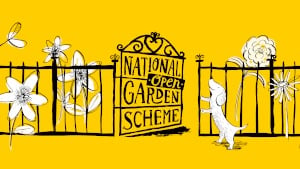About 84 Higham Street
Inspired by Beth Chatto’s gravel garden and with a naturalistic planting style, the ‘Garden on the Hill’ has a good balance of structural shrubs and trees, alongside a diverse selection of flowering herbaceous perennials and ornamental grasses. These are enhanced by the yearly movement of self-sowers such as verbenas, stipa, deschampsia, euphorbia, salvias, thymes, yarrows and sedums which never fail to surprise us with the new combinations of forms and textures they manage to create.
We designed the garden just before the pandemic in 2020 and chose to incorporate some of the existing features that worked with our planting scheme. This included the Great Wall of ivies, a lovely mature fig tree and a very large pond situated next to the house. Unfortunately we had to remove everything else including a few overgrown trees, which we replaced with more productive and manageable specimens, making sure to retain all of the chopped wood for log piles and wildlife sanctuaries.
Once the plot was cleared, our first job was to lay a thick layer of gravel mulch throughout the space as one of our main goals was to create a low-maintenance garden into which we would plant drought tolerant perennials needing minimal watering. We believe the gravel is the key factor to a truly low-maintenance garden. Besides the water retention, it also serves as a weed barrier – we hardly do any weeding all year round. It is also a permeable, cheaper alternative to paving and it helps with the pond water filtration. What we didn’t anticipate was the fact that the gravel doesn’t stop our much beloved self-sowers, actually it seems to encourage those that can throw out their root in dry soil – a win-win all round.
Next our attention turned to the pond which we wanted to turn into a wildlife haven. It had to be completely natural so all of the water comes via the roofs of the four adjacent houses down the drainpipe and into the pond when we have rainfall. This can mean we will have a fluctuation of water level throughout the year and anything planted into the pond would have to deal with this. We can happily say all the plants we added seem completely unfazed and continue to thrive albeit slowly, even during the summer drought of 2022 here in London.
Filtration is provided by an aquarium pump alongside the plants and gravel bed we introduced making the pond 100% wildlife friendly.
In the Spring and summer the pond takes on a life of its own and it is magical to witness the daily maiden flights of dozens of dragonflies after they emerge from the sparkling clear water. We’re still hoping a family of frogs or newts will make their home in our pond and with that in mind have worked hard to establish the plants around the concrete perimeter. These include ground hugging thymes and leptinellas, sedums, acaenas and sedges, water forget-me-nots, water mint and grasses, many of them self-seeding or growing into all the nooks and crannies which we positively encourage and enjoy.
Many of the plants in the rest of the garden were arranged around the newly planted trees and helped soften the decking and seating areas throughout the space. We focused on trying to make sure we have all year interest with our choices of flowers, leaves, textures, shapes and forms and can honestly say it’s still a work in progress. Some of our planting combinations have been successful and others not so, but due to the nature of some of the plants and their ability to self-seed in the gravel it never fails to amaze and delight us how the garden manages to put a plant in a place we wouldn’t have even have thought of.
No-lawn gravel garden. Wildlife pond with natural filtration and rainwater collection, slowing down rainwater runoff. Low maintenance back garden with draught tolerant plants, minimal watering and little weeding
Links to the plant list and before/after photos will be available during the open garden visit.

.jpg)
.jpg)
.jpg)
.jpg)
.jpg)
.jpg)
.jpg)
.jpg)
.jpg)
.jpg)
.jpg)
.jpg)
.jpg)
.jpg)
.jpg)
.jpg)
.jpg)
.jpg)


.jpg)
.jpg)
.jpg)
.jpg)
.jpg)
.jpg)
